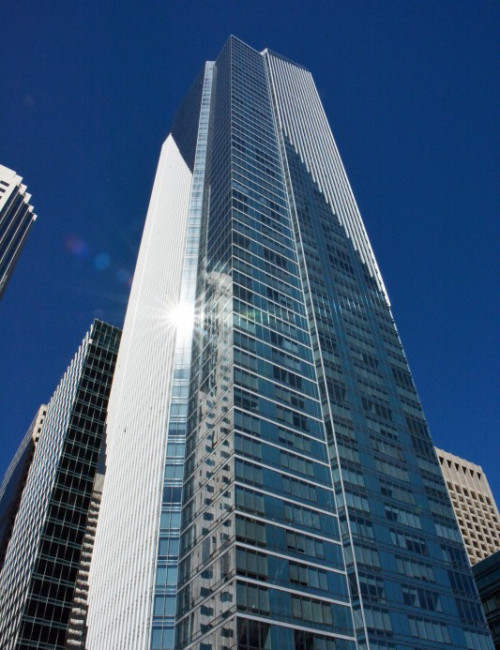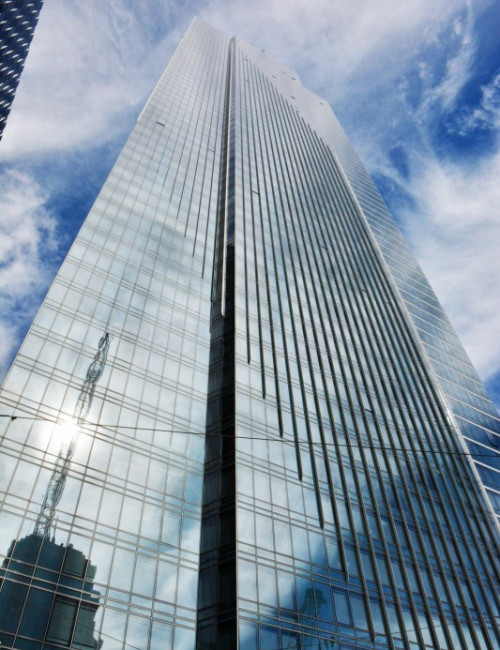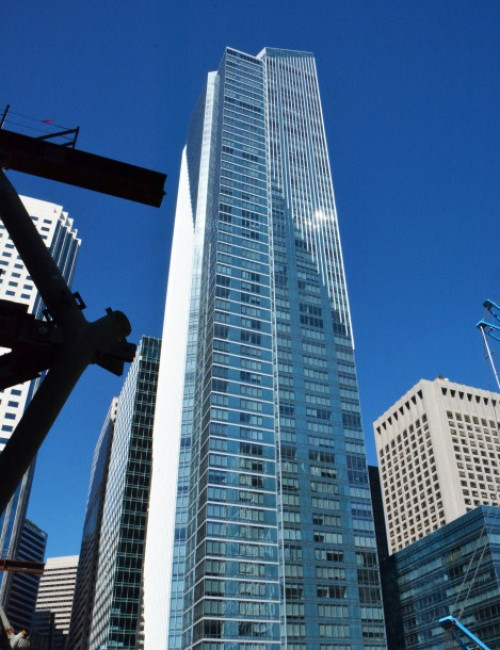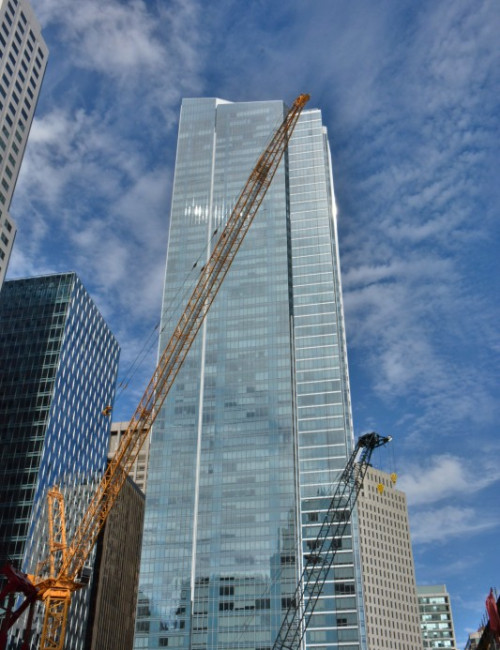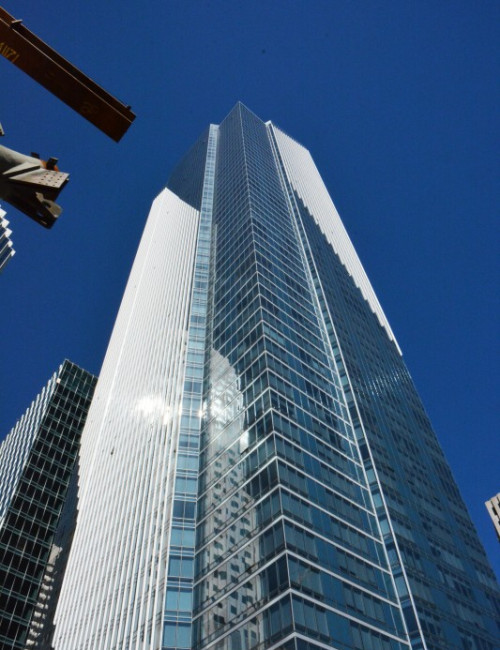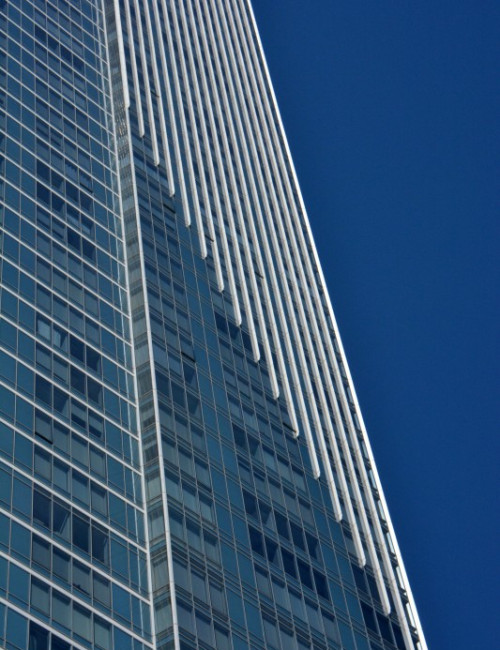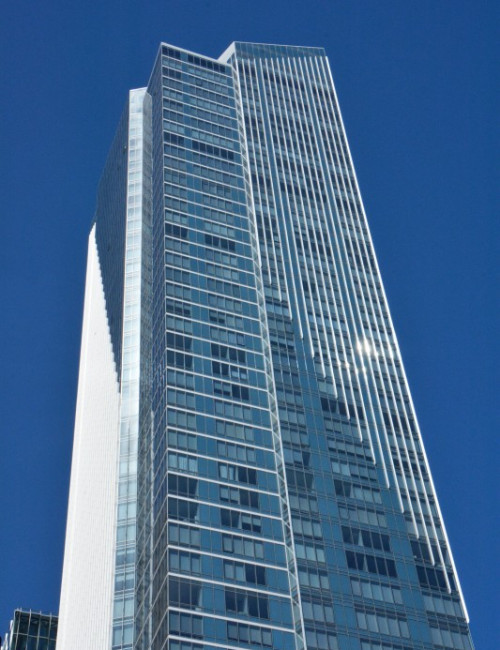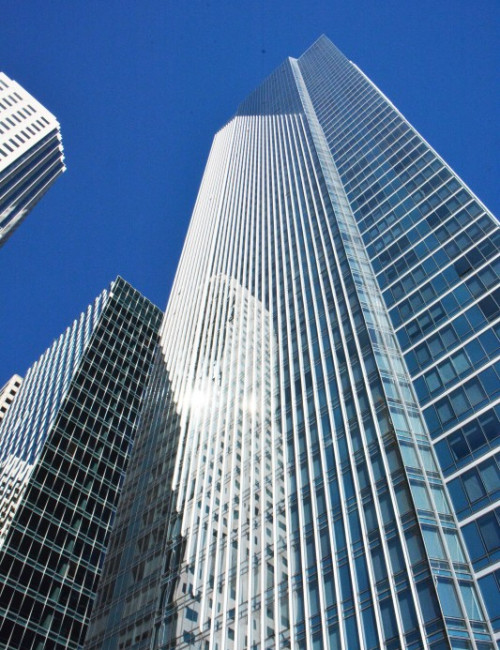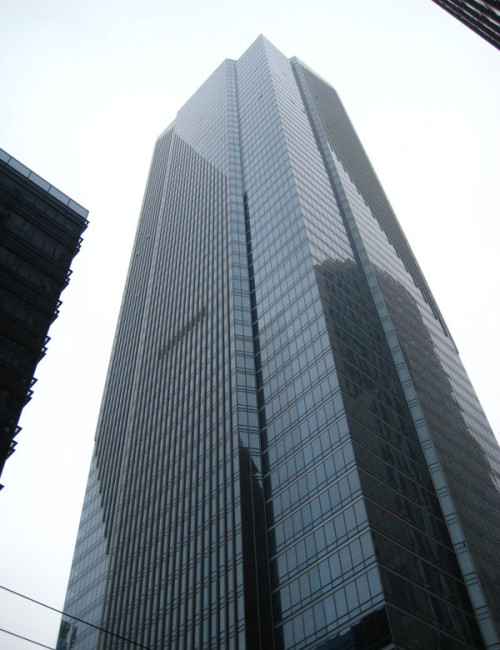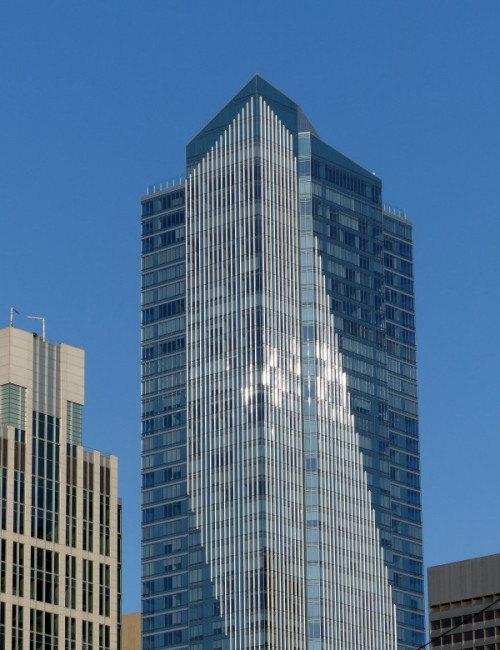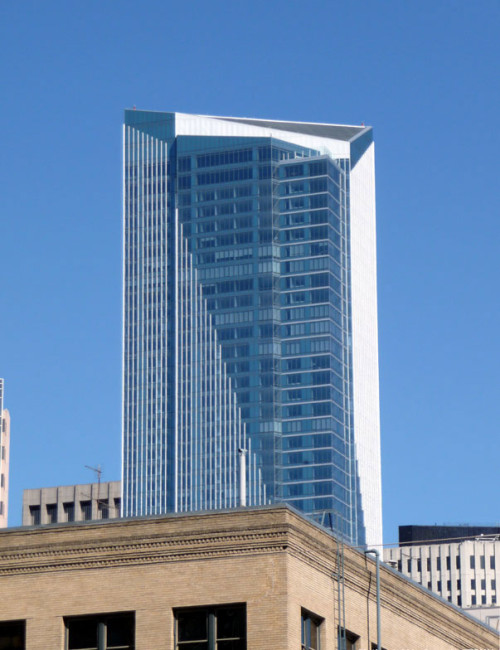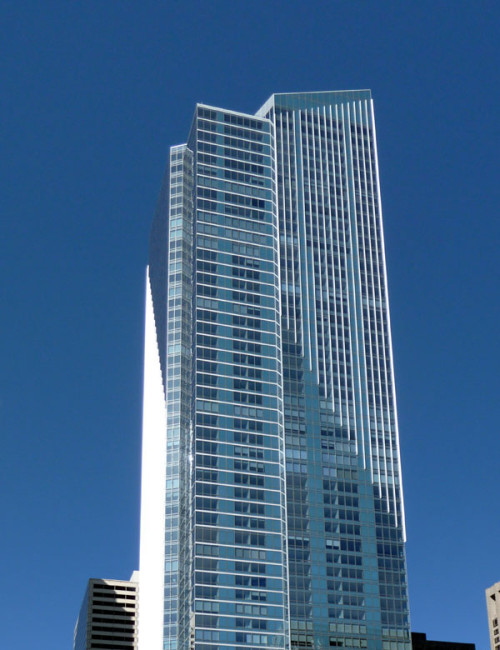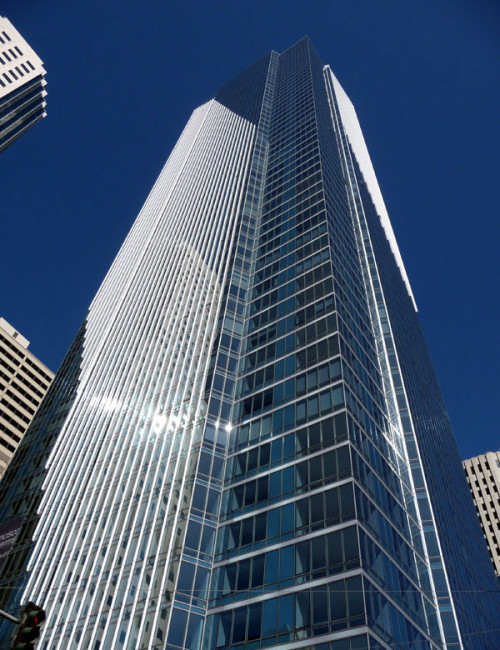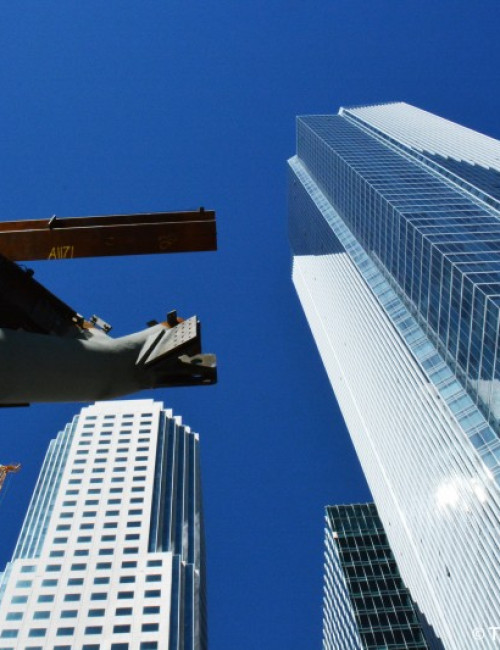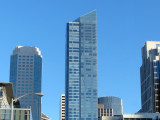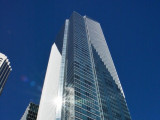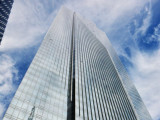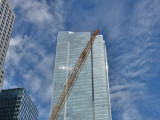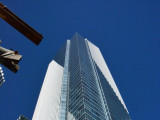Height rank
Millennium Tower
San Francisco
- Facts
-
Metrics
You must be a CVU Member to view this resource.
Official Name
Millennium Tower
Other Names
301 Mission Street
Type
Building
Status
Completed
Completion
2009
Country
City
Address
Function
A mixed-use tall building contains two or more functions (or uses), where each of the functions occupy a significant proportion of the tower's total space. Support areas such as car parks and mechanical plant space do not constitute mixed-use functions. Functions are denoted on CVU "Tallest Building" lists in descending order, e.g., "hotel/office" indicates hotel function above office function.
Residential
Structural Material
Both the main vertical/lateral structural elements and the floor spanning systems are constructed from steel. Note that a building of steel construction with a floor system of concrete planks or concrete slab on top of steel beams is still considered an “all-steel” structure as the concrete elements are not acting as the primary structure.
All-Concrete
Both the main vertical/lateral structural elements and the floor spanning systems are constructed from concrete which has been cast in place and utilizes steel reinforcement bars and/or steel reinforced concrete which has been precast as individual components and assembled together on-site.
All-Timber
Both the main vertical/lateral structural elements and the floor spanning systems are constructed from timber. An all-timber structure may include the use of localized non-timber connections between timber elements. Note that a building of timber construction with a floor system of concrete planks or concrete slab on top of timber beams is still considered an “all-timber” structure as the concrete elements are not acting as the primary structure.
Mixed-Structure
Utilizes distinct systems (e.g. all-steel, all-concrete, all-timber), one on top of the other. For example, a Steel Over Concrete indicates an all-steel structural system located on top of an all-concrete structural system, with the opposite true of Concrete Over Steel.
Composite
A combination of materials (e.g. steel, concrete, timber) are used together in the main structural elements. Examples include buildings which utilize: steel columns with a floor system of reinforced concrete beams; a steel frame system with a concrete core; concrete-encased steel columns; concrete-filled steel tubes; etc. Where known, the CVU database breaks out the materials used within a composite building’s primary structural elements.
All-Concrete
Height
196.6 m / 645 ft
Floors Above Ground
58
Floors Below Ground
4
# of Apartments
440
# of Parking Spaces
355
# of Elevators
14
Tower GFA
106,933 m² / 1,151,017 ft²
Rankings
-
By function
You must be a CVU Member to view this resource.
-
By material
You must be a CVU Member to view this resource.
Construction Schedule
Construction Start
Completed
Retrofit Start
Retrofit End
Architect
Usually involved in the front end design, with a "typical" condition being that of a leadership role through either Schematic Design or Design Development, and then a monitoring role through the CD and CA phases.
Structural Engineer
The Design Engineer is usually involved in the front end design, typically taking the leadership role in the Schematic Design and Design Development, and then a monitoring role through the CD and CA phases.
Other Consultant
Other Consultant refers to other organizations which provided significant consultation services for a building project (e.g. wind consultants, environmental consultants, fire and life safety consultants, etc).
Other Consultant refers to other organizations which provided significant consultation services for a building project (e.g. wind consultants, environmental consultants, fire and life safety consultants, etc).
These are firms that consult on the design of a building's façade. May often be referred to as "Cladding," "Envelope," "Exterior Wall," or "Curtain Wall" Consultant, however, for consistency CTBUH uses the term "Façade Consultant" exclusively.
You must be a CVU Member to view this resource.
Developer
Millennium Partners
Architect
Usually involved in the front end design, with a "typical" condition being that of a leadership role through either Schematic Design or Design Development, and then a monitoring role through the CD and CA phases.
Structural Engineer
The Design Engineer is usually involved in the front end design, typically taking the leadership role in the Schematic Design and Design Development, and then a monitoring role through the CD and CA phases.
Other Consultant
Other Consultant refers to other organizations which provided significant consultation services for a building project (e.g. wind consultants, environmental consultants, fire and life safety consultants, etc).
Other Consultant refers to other organizations which provided significant consultation services for a building project (e.g. wind consultants, environmental consultants, fire and life safety consultants, etc).
These are firms that consult on the design of a building's façade. May often be referred to as "Cladding," "Envelope," "Exterior Wall," or "Curtain Wall" Consultant, however, for consistency CTBUH uses the term "Façade Consultant" exclusively.
Curtain Wall Design and Consulting, Inc.; Enclos Corp.; Vidaris, Inc.
TREVIICOS NORTH AMERICA
Material Supplier
Material Supplier refers to organizations which supplied significant systems/materials for a building project (e.g. elevator suppliers, facade suppliers, etc).
Material Supplier refers to organizations which supplied significant systems/materials for a building project (e.g. elevator suppliers, facade suppliers, etc).
Shanghai Yaohua Pilkington Glass Group Co., Ltd.
Soilmec
Retrofit Companies Involved
Contractor
The main contractor is the supervisory contractor of all construction work on a project, management of sub-contractors and vendors, etc. May be referred to as "Construction Manager," however, for consistency CTBUH uses the term "Main Contractor" exclusively.
Shimmick Construction Company
Other Consultant
Other Consultant refers to other organizations which provided significant consultation services for a building project (e.g. wind consultants, environmental consultants, fire and life safety consultants, etc).
Other Consultant refers to other organizations which provided significant consultation services for a building project (e.g. wind consultants, environmental consultants, fire and life safety consultants, etc).
Simpson Gumpertz & Heger
Global News

29 September 2021
San Francisco’s Leaning Tower Risks Massive Plumbing Failures
In San Francisco, the beleaguered Millennium Tower, which has been tilting and sinking despite efforts to correct the situation, just added plumbing challenges to the...
About Millennium Tower
301 Mission Street, also known as Millennium Tower, is one of the tallest reinforced concrete structure situated in a seismic zone 4 region. The tower’s height posed many challenges and required the creative use of technologies and cutting edge innovations.
In order to meet the owner’s floor height limits, W-sec steel link beams were used as the shearwall core coupling beams. Conventional diagonally reinforced coupling beams would have required significantly more depth. The embedded region of the beam extends 1.2 meters (4ft) into the wall and transfers the beam moment by bearing on the concrete above and below the embedded beam. Conventional ties which are closely spaced in columns and beams can make it nearly impossible to place concrete. A tie system of welded grid reinforcement known as Baugrid was used, which eliminates all hooks and significantly reduces the volume of rebar. All shearwall boundary elements, Special Moment Resisting Frame columns and beams utilize the Baugrid system. The flanges of the shearwall core are reinforced by continuous Baugrids providing resistance for confinement and shear.
Global News

29 September 2021
San Francisco’s Leaning Tower Risks Massive Plumbing Failures
In San Francisco, the beleaguered Millennium Tower, which has been tilting and sinking despite efforts to correct the situation, just added plumbing challenges to the...

01 September 2021
Work to Solve San Francisco Residential Building’s Sinking Makes It Sink Faster
Foundation retrofit work was halted at Millennium Tower in San Francisco after it was found the project to prevent further sinking was in fact causing...

04 September 2019
Residents of San Francisco’s Millennium Tower Tentatively Reach Lawsuit Settlement
A settlement has been tentatively reached in a lawsuit involving tenants of the sinking Millennium Tower in downtown San Francisco, an attorney representing the luxury...

12 March 2019
Drones Used to Inspect Salesforce Tower in San Francisco Indicative of Larger Trend
Months before two cracks were discovered on interior windows of Salesforce Tower – San Francisco’s tallest building, owner Boston Properties enlisted a drone to inspect...

04 December 2018
There’s a new plan to stop Millennium Tower sinking
All sides in the Millennium Tower debacle appear to be nearing an agreement on a $100 million-plus fix to stop the 58-story high-rise from sinking...
Learn more about the Council on Vertical Urbanism
Discover how vertical living is shaping the next generation of urban environments. Explore insights, research, and global leadership in vertical urban development



